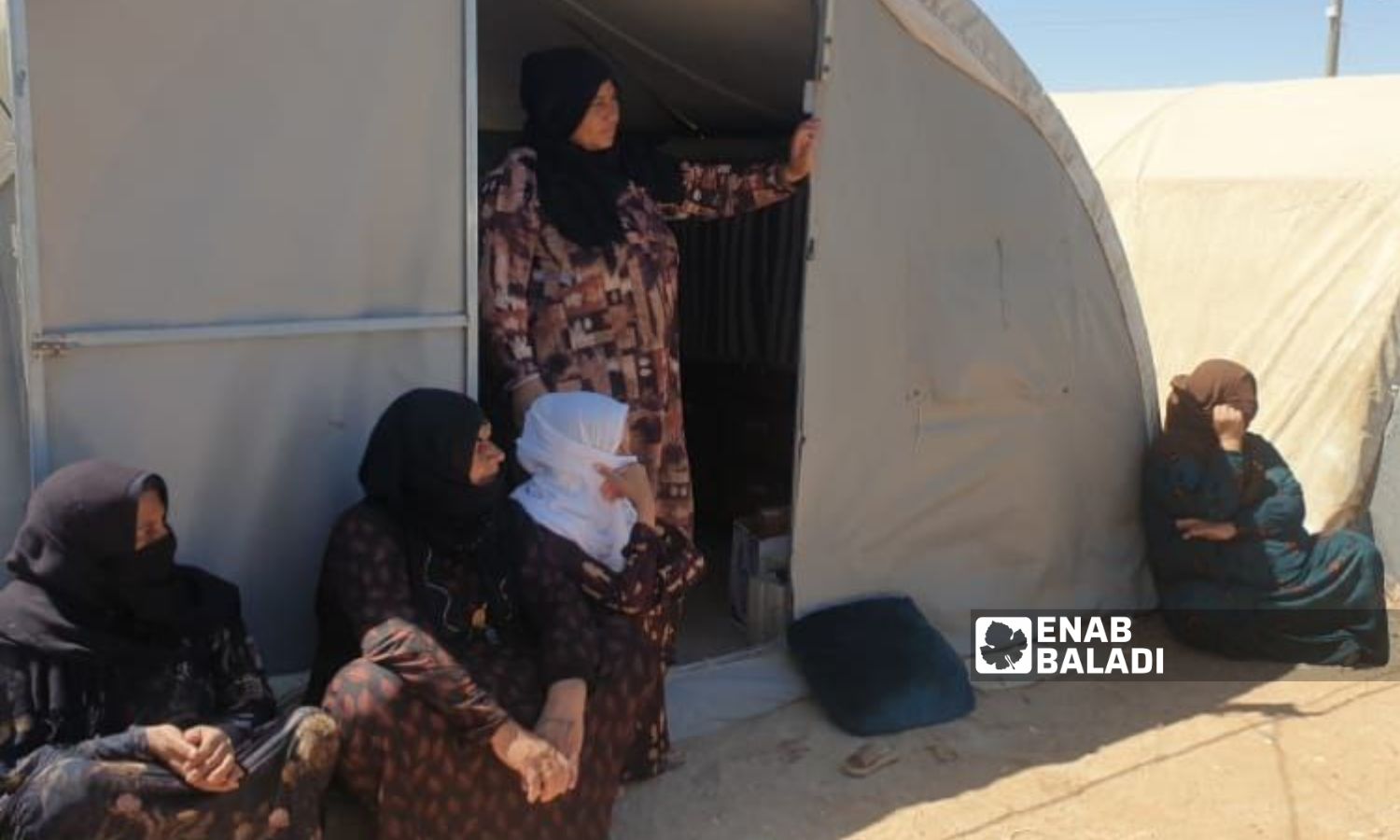



Al-Hasakah – Majd al-Salem
On the northeastern outskirts of the city of al-Hasakah, about 11,000 displaced people are facing difficulty in securing potable water in Ras al-Ain camp amid high temperatures this summer.
The camp, which is located within the areas controlled by the Syrian Democratic Forces (SDF), includes displaced persons from Ras al-Ain and Abu Rasin and their countryside and from some villages in the northern and western vicinity of Tal Tamr, close to the contact lines between the areas controlled by the Syrian National Army (SNA) and the SDF.
The camp residents depend on water allocations provided by organizations, which are not available on a daily basis, and on water in plastic tanks that lack hygiene standards, which carry the risk of contracting diseases and epidemics.
Samir, a 35-year-old resident of the camp, who hails from the western countryside of Abu Rasin, told Enab Baladi that the need for clean and cold drinking water increases with the rise in temperatures and that the displaced face difficulty in obtaining it.
Samir stated that the scarcity of water makes their daily lives “like hell,” and they are forced to live with its scarcity and use it with great caution, which affects health in the first place, and meeting their needs in cooking, washing, and bathing.
He added that the situation of the camp is constantly deteriorating and that they urgently need immediate intervention to provide clean and potable water on a regular basis.
Samir also pointed out that the supposed allotments are 50 liters for each family member per day, supervised by an organization working in the camp, but these quantities “are not received regularly, and there is a permanent delay in distribution, and families are in constant need of water.”
Amin al-Ahmad, 48, who lives in the camp, told Enab Baladi that the temperatures are very high inside the tents, and the children are almost “suffocating,” and securing potable water has become his “main concern.”
He added that the water they get needs to be “cooled” in the camp’s “scorching” conditions, and for that, he buys a block of ice at prices ranging between 10,000 and 15,000 SYP on a semi-daily basis.
Al-Ahmad mentioned that the water is distributed to plastic tanks (each group of “sector” tents shares a specific tank), pointing out that most of the tanks are open and without covers, which makes the water polluted with dust and soil deposited at the bottom of the tanks, and sometimes insects are found in them.
He explained that the water situation exposed the displaced to the dangers of communicable diseases, and infections with several diseases had previously spread, such as diarrhea, poisoning, and skin infections.
The public relations official in the Ras al-Ain camp committee, lawyer Joan Eiso, told Enab Baladi that the water crisis in the camp is a result of a general crisis that the al-Hasakah governorate as a whole suffers from.
Eiso mentioned that the camp lacks the most basic necessities of life due to the absence of international support and the closure of the al-Yarubiyah border crossing between Syria and Iraq, with the exception of the arrival of some aid by associations and organizations.
The residents of the Ras al-Ain and al-Tuweina/Washokani camps (a camp experiencing the same conditions) called on the international authorities, through reports, notes, and letters, to support and improve their infrastructure, while working to return the displaced to their original place, according to Eiso.
According to testimonies from residents of Ras al-Ain camp, the Autonomous Administration of North and East Syria (AANES, the ruling authority in the region) does not prevent families wishing to leave, but what prevents them is the lack of alternative housing in the city, or the inability to afford its rent if there is one, as the house rent reaches one million Syrian pounds per month ($100).
About 40,000 displaced people have been living in the two camps since 2019, after the Peace Spring operation, which was carried out by the Turkish-backed Syrian National Army in the cities of Ras al-Ain, northwest of al-Hasakah, and Tel Abyad, north of Raqqa.
if you think the article contain wrong information or you have additional details Send Correction